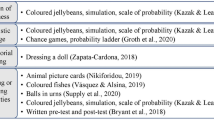Abstract
2002 is marking the epoch as considered here. It is still within the interval Freudenthal once made predictions for, rather provocative predictions, I must confess. I quote a lecture from 1975: ‘What to predict now? How mathematics education will look like in the year 2000? The answer is simple. There will be no mathematics education anymore in the year 2000. It will be gone. There will be no subject, called mathematics anymore, no mathematics lesson on the schedule, no textbook to teach from. Don't call me ‘this devil's advocate’, I àm the devil'. In the present contribution Freudenthal's predictions will be both confirmed and refuted. This means mathematics education is underway to getting integrated in other subjects to some extent, but on the other hand.... After an example of geometry from a new program, which is on blind spots captains of ships have to deal with while navigating, the arguments justifying the renewal of mathematics programs in secondary education are considered. Then the essentials of the olds will be characterised globally. However, what is left then, are the problems of implementation. The problems for the teachers evolve from the decisive differences between the old-fashioned rules and routines oriented programs and the new, problem oriented programs, containing a wealth of situations embedded in all kinds of interesting contexts. Differences in structure, in goals, in teaching, in tests and exams pas the review. Modern technology and its possibilities and promises are of my concern in the next chapter. Finally some conditions to be created by policy makers, are elaborated which to some extent would guarantee some sound development of mathematics education up to the year 2002. One of Freudenthal's predictions seems to come through: In the year 2000 pupils in general, secondary education will pick up more mathematics than ever before, or so it seems.
Similar content being viewed by others
References
Freudenthal, H.F.: 1975, ‘Wandelingen met Bastiaan’,Pedomorfose 25, 51–64.
Freudenthal, H.F.: 1976, ‘Wiskunde-Onderwijs anno 2000. Afscheidsrede IOWO 14 augustus 1976’,Euclides 52, 290–295.
Freudenthal, H.F.: 1979, ‘Konstruieren, Reflektieren, Beweisen in phänomenologischer Sicht’,Schriftenreihe Didaktik der Mathematik. Klagenfurt 2,183–200.
Freudenthal, H.F.: 1979, ‘How does Reflective Thinking Develop?’ In:Proceedings of the Conference IGPME Warwick.
Freudenthal, H.F. and S.L. Kemme: 1989, ‘Sinusfuncties’,Nieuwe Wiskrant 9, 20–22.
Freudenthal, H.F.: 1992,Revisiting Mathematics Education, Kluwer Acad. Publ., Dordrecht.
Lange, J. de: 1987, Mathematics, Insight and Meaning. OW & OC, Utrecht University.
Romberg, T.A.: 1991, ‘Epistomological Issues and Challenges to Assessment’,Studies in Mathematics Education, ICMI.
Streefland, L.: 1990, ‘Development Research and Tests — sine Functions as a Paradigm’, inProceedings of the BISME-2, August 23.–25., 1990 Bratislava.
Author information
Authors and Affiliations
Rights and permissions
About this article
Cite this article
De Lange, J. Between end and beginning. Educ Stud Math 25, 137–160 (1993). https://doi.org/10.1007/BF01274106
Issue Date:
DOI: https://doi.org/10.1007/BF01274106




